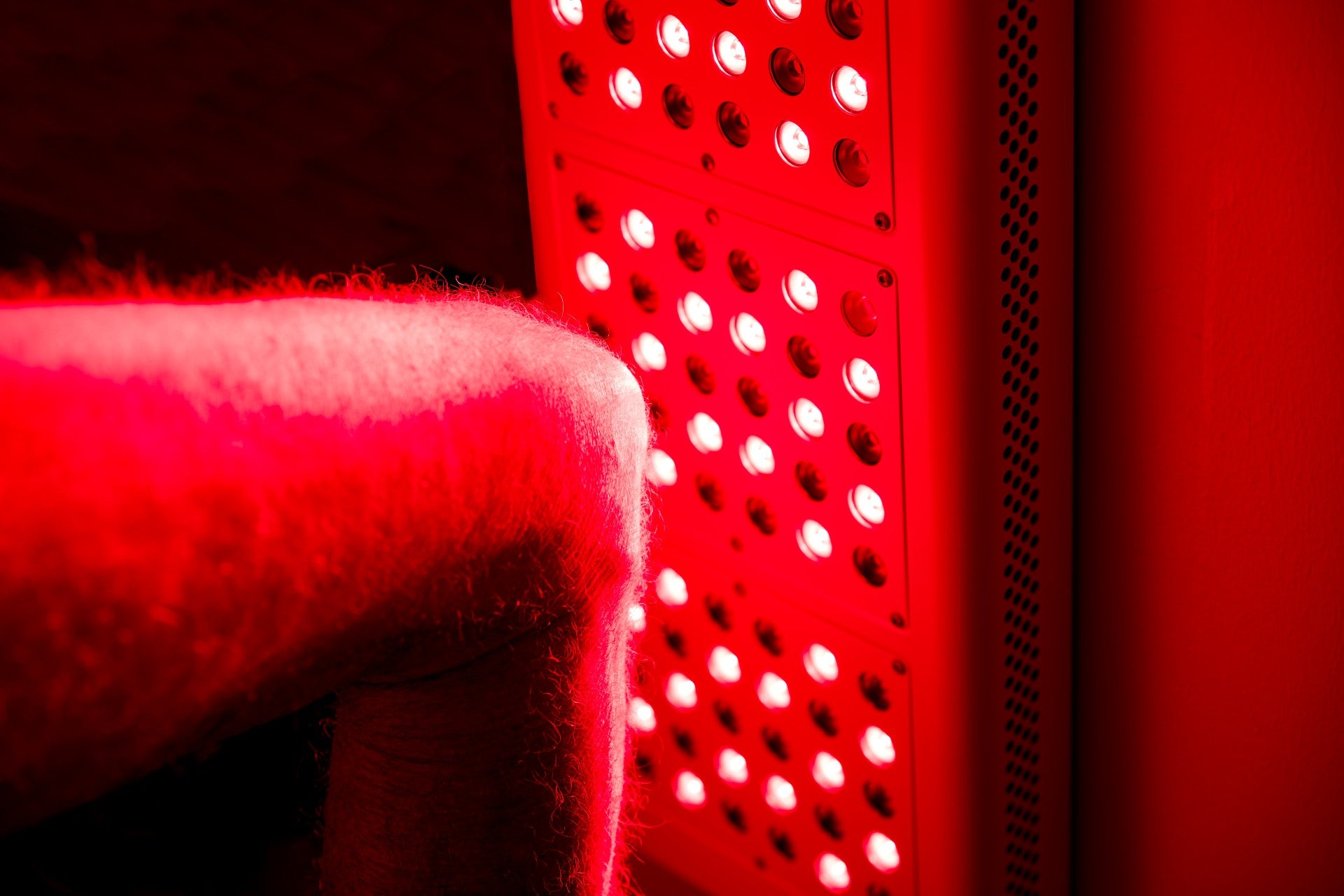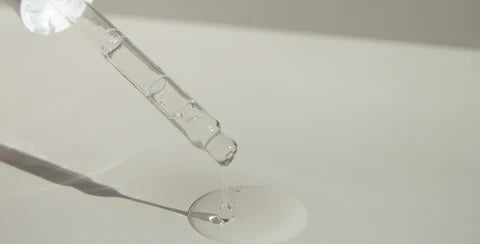Microcurrent Facial and Electrical Muscle Stimulation (EMS): Novel Skin Care Techniques for Enhancing Skin Appearance & Improving Facial Definition
In the pursuit of the optimal maintenance of youthful and radiant skin, advancements in science have led to the development of various skin care techniques, prime among which are microcurrent facials and electrical muscle stimulation (EMS). Microcurrent and EMS facials have gained popularity for their potential to improve appearance. This article provides a comprehensive understanding of microcurrent and EMS technology in the context of anti-aging skin care, i.e. where the goal of the user is the preservation of one’s youth and a reduction in the tired and dull look often associated with natural aging.
What exactly are ‘Microcurrent’ and EMS?
Microcurrent: Low-level electrical currents targeting facial muscles and cellular metabolism for rejuvenation and anti-aging effects in skin care.
Electrical Muscle Stimulation: Application of electrical currents, often at higher intensities (than microcurrent), primarily aimed at muscle contraction to improve muscle tone and promote toning in the context of skin care.
The key difference, thus, between 'microcurrent' and 'electrical muscle stimulation' in the context of skin care is that 'true microcurrent' refers to lower-level electrical currents. The benefits of microcurrent (also known as ‘true microcurrent’) at lower thresholds appear to be limited to helping promote metabolism efficiently, while the higher thresholds of microcurrent delivered into skin tissue by EMS appear to lead to more potent and noticeable results such as the improved definition of face and neck muscles, thanks to its higher ability to tone muscles by causing more hypertrophy. In one study from 2017 (Pasiakos et. al) found that neuromuscular electrical stimulation resulted in significant improvements in muscle mass and strength, indicating that electrical muscle stimulation can effectively tone and define aging muscles. The stimulation provided by NMES was shown to induce muscle hypertrophy, leading to increased muscle size and improved muscle function.
What’s a ‘Microcurrent Facial'?
Microcurrent facial treatment involves the application of low-level electrical currents to the skin to stimulate facial muscles, improve circulation, and promote collagen and elastin production. The technology behind microcurrent facials is based on the principle that electric currents mimic the body's natural electrical signals, thereby enhancing cellular metabolism and rejuvenating the skin.
Scientific studies have consistently demonstrated the efficacy and effectiveness of microcurrent facial treatments. In a double-blind randomized trial by Chang et al. (2019), participants who received microcurrent treatment showed significant improvements in skin hydration, texture, and facial contour compared to the control group. This suggests that microcurrent facials have a positive impact on perceived facial aging.
Microcurrent devices, typically equipped with two probes or metal wands, deliver low-level currents to specific areas of the face and neck. These currents, ranging from 0.1 to well in excess of 1,000 microamperes, depending on the equipment/device, work at a cellular level, targeting the facial muscles, stimulating ATP production, and promoting cellular regeneration.
Microcurrent Facials Benefits
- Increased ATP production: Microcurrent facials promote adenosine triphosphate (ATP) synthesis in the mitochondria of our cells, providing energy to cells and enhancing their functioning as the metabolic powerhouses. Scientific studies have shown that microcurrent treatments can increase ATP production, leading to improved cellular metabolism and a more youthful appearance (Weiss et al., 2017). The improved metabolism being induced by the microcurrent, and similar improvements being absent in the placebo group showcase the effectiveness of microcurrent for improved cellular metabolism.
- Enhanced muscle tone: The electrical currents used in microcurrent facials target the facial muscles, resulting in improved muscle tone, leading to transient lifting effects often instantaneously, and more lasting muscle definition being observed with multiple successive sessions. This has been supported by studies, which indicate that microcurrent treatment improves muscle structure and function (Khan et al., 2017).
- Improved circulation: Microcurrents stimulate blood flow and lymphatic drainage, enhancing nutrient and oxygen delivery to skin cells. This increased circulation helps remove toxins and promotes a healthy, radiant complexion by bringing fresh nutrients to target tissue with an increased frequency.
- Increased collagen and elastin production: Microcurrent facials stimulate and activate fibroblasts, the cells responsible for collagen and elastin synthesis, promoting the production of these vital proteins. Scientific studies have shown that electrical stimulation can enhance collagen synthesis, improving skin elasticity and reducing wrinkles (Alster et al., 2019).
- Reduction in fine lines and wrinkles: The lifting and toning effects of microcurrent facials, combined with increased collagen production and increased cellular metabolism, can all contribute to helping diminish the appearance of fine lines and wrinkles over time.
- Improved product absorption: Microcurrent facials increase the permeability of the skin, allowing for better absorption of serums, creams, and other skin care products. This is especially true in the case of water-based / aqueous products. This leads to the maximization in the effectiveness of the products used during and after the treatment.
- Natural and non-invasive: Similar to more powerful anti-aging modalities such as Radiofrequency and Ultrasound, microcurrent, or its more powerful form EMS, both offer a non-invasive alternative to more invasive cosmetic procedures such as microneedling or surgical facelifts. They are generally painless and do not require any downtime, or a complicated setup, thus making them an attractive option for individuals seeking natural skin rejuvenation.
- Reduction in puffiness and swelling: Microcurrents promote lymphatic drainage, reducing puffiness and swelling in the face. This can be particularly beneficial for individuals dealing with water retention, inflammation or facial bloating.
- Improved skin texture: Microcurrent facials stimulate cellular regeneration, resulting in a smoother and more refined skin texture. They can help minimize the appearance of pores, acne scars, and other textural irregularities of the skin.
- Long-term cumulative effects: Regular microcurrent facial treatments can yield cumulative benefits over time. Consistency is key in achieving optimal results, as the effects of microcurrent facials build upon each other with each session.
Accessing Microcurrent and EMS Sessions: Microcurrent and EMS sessions for the face and neck are typically offered at professional spas, wellness centers, and specialized skin care clinics. Trained aestheticians or skincare professionals perform these treatments using advanced microcurrent devices. It is essential to choose a reputable provider who employs certified professionals to ensure safety and efficacy.
For individuals seeking a more affordable and convenient option, at-home microcurrent and EMS devices are available on the market. These devices are designed for personal use and offer similar benefits to professional treatments. However, it is crucial to choose FDA-approved devices and carefully follow the instructions provided by the manufacturer to ensure safety and optimal results.
Are Microcurrent Facials Worth It?
In short, yes. A number of scientific studies support the efficacy and effectiveness of microcurrent facials and electrical muscle stimulation for anti-aging purposes. In the scientific literature it has been shown that these techniques provide numerous benefits, including increased ATP production in the mitochondria of our skin cells, enhanced muscle tone & definition, improving blood circulation to target tissue, increased collagen and elastin production, reduction in fine lines and wrinkles, improved product absorption (typically of water-based skin products only), reduction in face puffiness and swelling, overall improved skin texture, and long-term cumulative effects. Added to this the fact that both microcurrent or the stronger form EMS are both non-invasive and do not require downtime, the proposition is strongly in favor of them. However, one must moderate their expectations when considering microcurrent or EMS as anti-aging alternatives to more powerful modalities such as Ultrasound, Radiofrequency (commonly known as ‘RF’) or outright surgical intervention, which deliver significantly more when it comes to anti-wrinkle and skin tightening results overall, and do so in a comparatively much more tighter timeline.
Doing Microcurrent Session: Spas vs At-Home
Individuals can access microcurrent and EMS sessions at professional establishments, where trained professionals use advanced devices to deliver these treatments. On average, a single microcurrent facial session can range from $100 to $300. Alternatively, at-home devices, being one-time purchases do not require repeated outlay of money and offer a more value-friendly and convenient option for regular use, provided they are FDA-approved and used according to manufacturer instructions. For example, devices from EvenSkyn that offer EMS include the EvenSkyn Eclipse and the best selling flagship anti-aging device, the EvenSkyn Lumo, both of which are not only FDA approved but deliver the more powerful form of microcurrent in a cocktail of other proven anti-aging technologies such as red light therapy, ultrasound, radiofrequency and sonic massaging.
References:
- Chang, K. W., Shieh, T. Y., Huang, Y. L., Hsieh, C. J., & Chang, H. C. (2019). A Double-Blind Randomized Trial Investigating the Effects of Microcurrent Facial Treatment on Perceived Facial Aging. Journal of Clinical and Aesthetic Dermatology, 12(4), E35-E40.
- Alster, T. S., Graham, P. M., Williams, C. M., & Higley, H. R. (2019). The Effects of Electrical Stimulation on the Skin. Journal of Drugs in Dermatology, 18(5), 454-457.
- Weiss, R. A., Weiss, M. A., Munavalli, G. S., Beasley, K. L., Marwaha, S., & Bogle, M. A. (2017). Non-Invasive Electrical Stimulation Improves Skin Structure and Function in Women over 50: A Randomized Controlled Trial. Scientific Reports, 7(1), 11442.
- Khan, M. H., Victor, F., Kalavala, M., & Epstein, J. S. (2017). The Use of Facial Electrical Stimulation in Cosmetology. Journal of Cosmetic Dermatology, 16(3), 454-459.
- Boukari, F., Jourdan, E., Fontaine, P., & Jeanmaire, C. (2016). Microcurrent Facial Toning and Lifting Devices for Cosmetic Use: An Overview. Journal of Cosmetic Dermatology, 15(2), 174-182.










Leave a comment
All comments are moderated before being published.
This site is protected by hCaptcha and the hCaptcha Privacy Policy and Terms of Service apply.